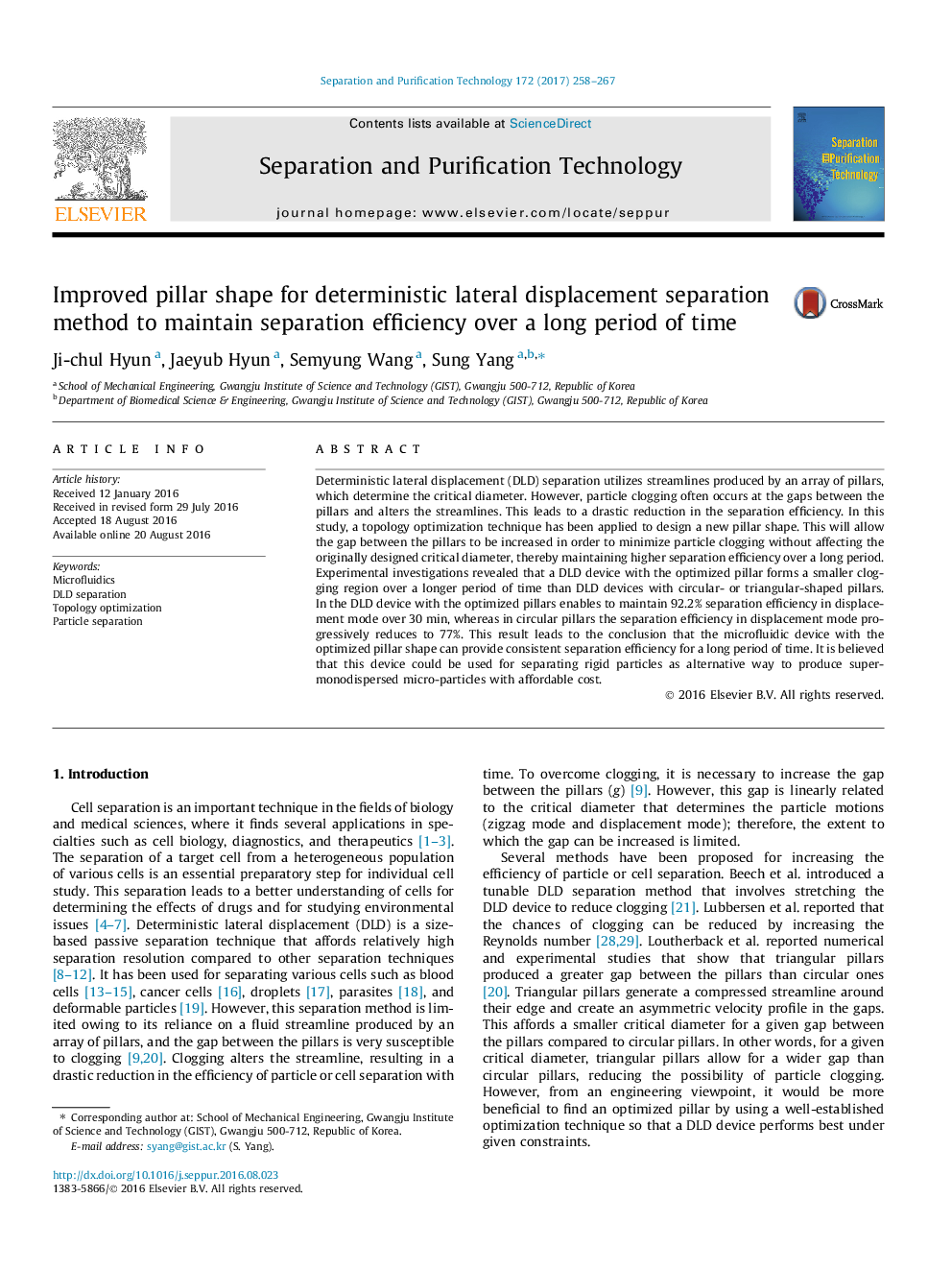| Article ID | Journal | Published Year | Pages | File Type |
|---|---|---|---|---|
| 7044205 | Separation and Purification Technology | 2017 | 10 Pages |
Abstract
Deterministic lateral displacement (DLD) separation utilizes streamlines produced by an array of pillars, which determine the critical diameter. However, particle clogging often occurs at the gaps between the pillars and alters the streamlines. This leads to a drastic reduction in the separation efficiency. In this study, a topology optimization technique has been applied to design a new pillar shape. This will allow the gap between the pillars to be increased in order to minimize particle clogging without affecting the originally designed critical diameter, thereby maintaining higher separation efficiency over a long period. Experimental investigations revealed that a DLD device with the optimized pillar forms a smaller clogging region over a longer period of time than DLD devices with circular- or triangular-shaped pillars. In the DLD device with the optimized pillars enables to maintain 92.2% separation efficiency in displacement mode over 30Â min, whereas in circular pillars the separation efficiency in displacement mode progressively reduces to 77%. This result leads to the conclusion that the microfluidic device with the optimized pillar shape can provide consistent separation efficiency for a long period of time. It is believed that this device could be used for separating rigid particles as alternative way to produce super-monodispersed micro-particles with affordable cost.
Related Topics
Physical Sciences and Engineering
Chemical Engineering
Filtration and Separation
Authors
Ji-chul Hyun, Jaeyub Hyun, Semyung Wang, Sung Yang,
